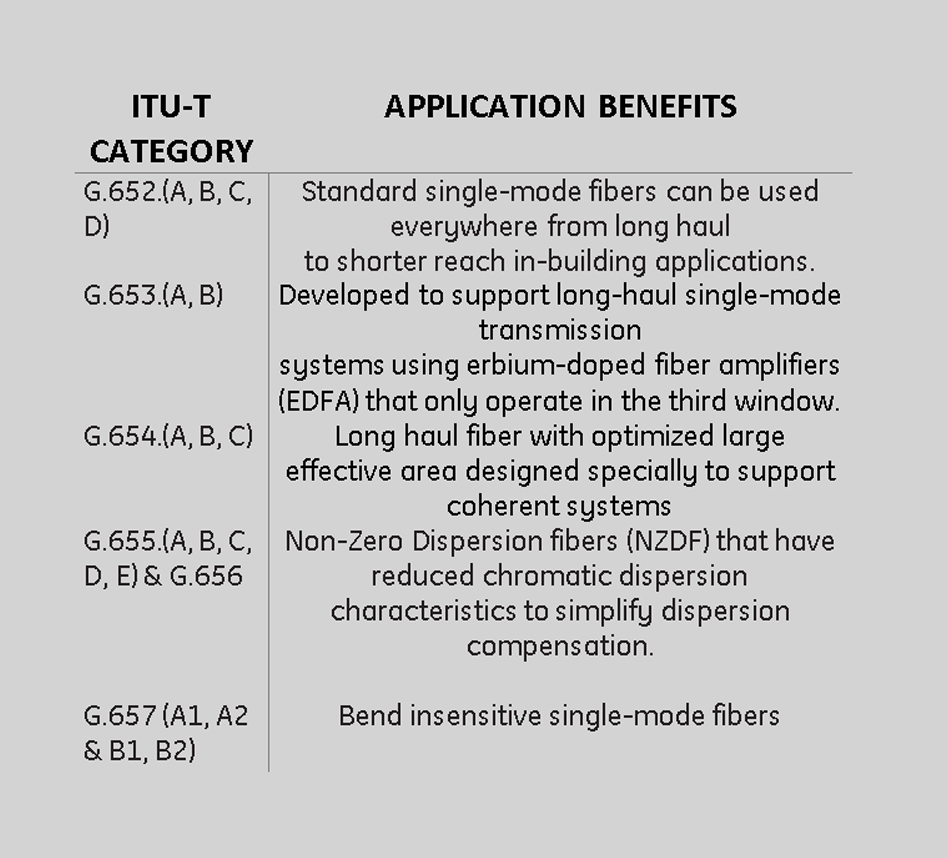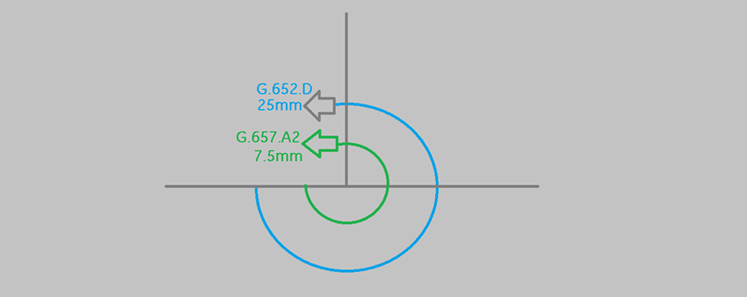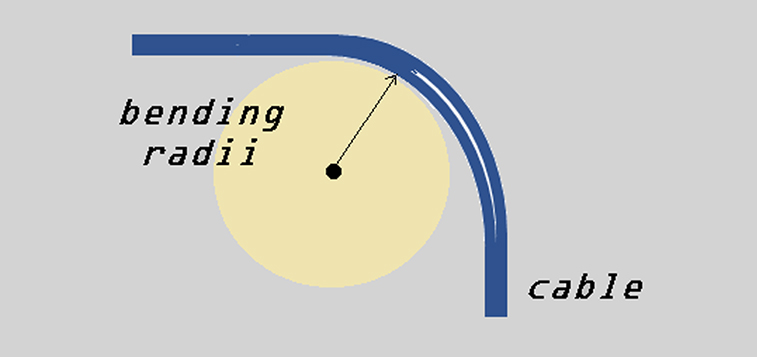G652D and G657A2 are two ITU-T standards for single-mode optical fiber and cable. These standards describe the transmission, mechanical and geographical attributes of a single-mode optical fiber cable. The ITU-T is a sub-organ of the International Telecommunication Union (ITU) – a specialized body mandated by the United Nations. Today, different types or families of single-mode optical fiber cables are being manufactured to provide the users with a choice to go with the type of cable that suits their application most. As of today, there are total nineteen single-mode fiber specifications available.

G652.D Standard Singlemode Fibers and Cables
ITU-T G652.D single-mode fibers are widely used in a broad range of networking and communication applications. It is the latest version available in the G652 category and supports coarse WDM (CWDM) transmission. This specification is generally considered as the de-facto standard for single-mode fiber.
This fiber category provides a zero dispersion at 1310 nm wavelength. Thus, it is designed to deliver optimum performance in the 1310 nm band. however, it is possible to operate G652.D single-mode fiber cables at 1510 nm. The G652.D can be used in both short-haul and long-haul applications.
The only shortcoming of the G657D fibers is their inability to sustaining higher bending radii. Even the finest built G657D optical fiber cables do not allow steep bends. Consequently, more cable is required to avoid bends during deployment, resulting in higher overall costs.
Benefits of G652.D Fibers
- Backward compatibility with earlier versions
- Lower system cost
- Offers zero water peak and seamless splicing
- Lower splicing losses
- Supports longer cable runs

G657A2 - Bend Intensive Fiber
G657A2 is one of the four specifications defined by the ITU-T under the G657 category. This version provides information about the construction of bend intensive fiber and optical fiber cables. Thus, G657A2 cables are used in network installations where higher bend resistance is necessary. The G657A2 is a powerful solution for access networks where frequent bending and joining of cables and hardware miniaturization is observed. Here, it is important to note that the G657A2 fibers are fully compatible with the G657D fibers.Benefits of G657A2 fibers
- Ideal for smaller cable installation radii
- Cost-effective for access networks
- Supports higher density applications and miniaturization
- Offers improved flexibility

What is Bending Radii or Bend Radius?
In the optical fiber industry; the radius of curvature through which an optical fiber can be bent or twisted is known as bend radius. In simpler terms, the minimum allowable radius one can bend an optical fiber cable without damaging it, kinking it or shortening its life is called bend radius.
Various kinds of fiber optic cables come with different characteristics and different physical construction and that’s why allowable bending radii differ from cable to cable. Generally, fiber cables are supplied with a specified minimum bend radius. However, it is recommended that the minimum bending radii should remain around ten times lesser than the outer diameter of the cable. Hence, a 4 mm cable should not have any bends less than 40 mm in radius.
Conclusion:
Both the G652D and G657A2 are compatible and can be used in a tandem arrangement. The G652D is has become the standard for single-mode optical fiber cables. Whereas, the G657A2 is considered as an ideal solution for access level networking arrangements where steep bends are inevitable.
 English
English
 Deutsch
Deutsch
 Espaniol
Espaniol










